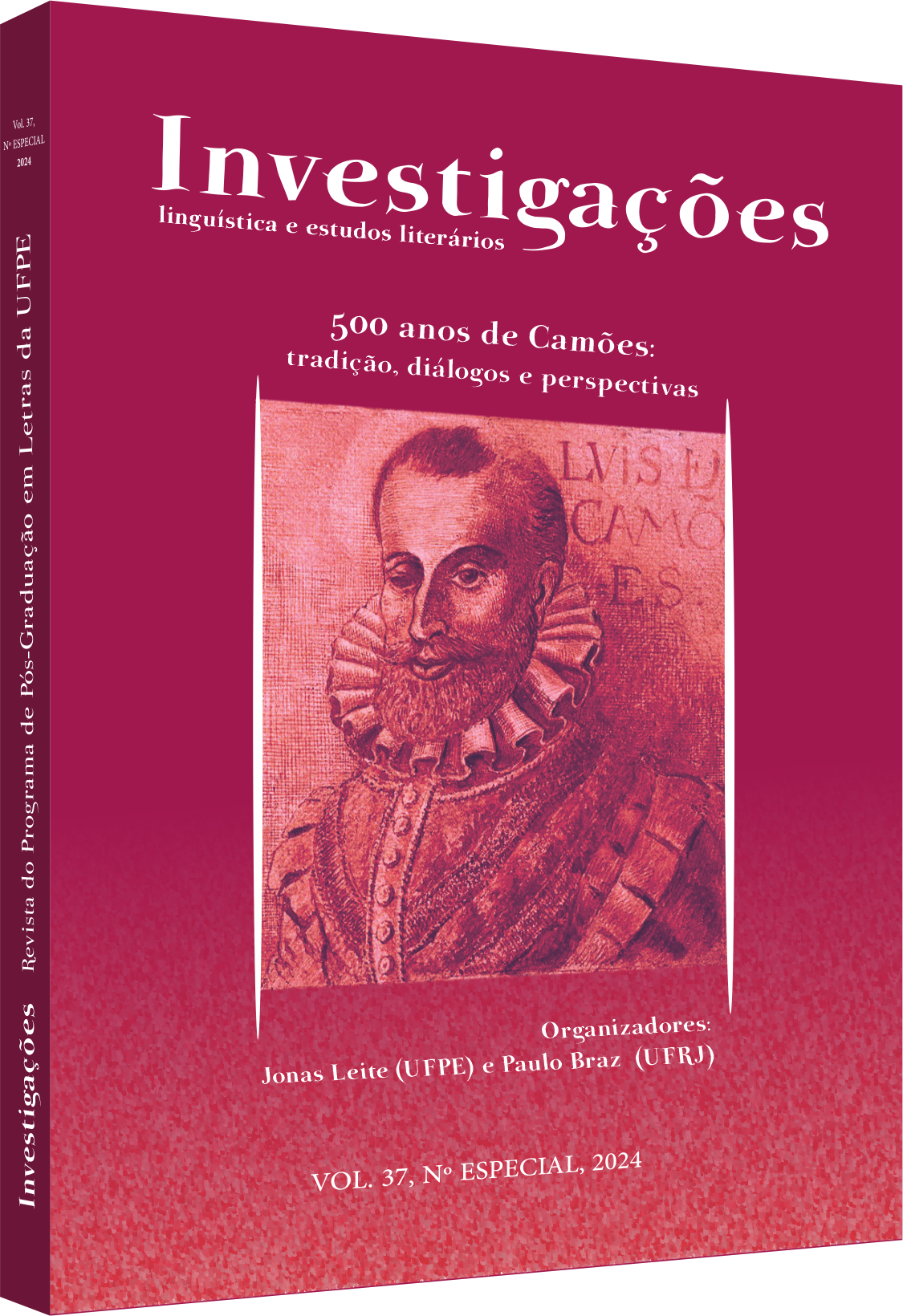Grotesque presence in the mannerism of Camonian sonnets
DOI:
https://doi.org/10.51359/2175-294x.2024.263060Keywords:
Camoens, mannerism, grotesque, sonnetsAbstract
This article aims to understand the relationships between the Mannerist style and the category of the grotesque based on sonnets by Luís de Camões, in which this union is shaped. Initially, wesought to define what Mannerism would be in relation to Renaissance classicism and Baroque, based on theoretical studies by H. Wölfflin, A. Hauser, H. Hatzfeld and G. Hocke. Then, wetry to think about it in a convergence with the grotesque through theoretical references coming from W. Kayser and M. Bakhtin, followed by the analysis of the poems.
References
BAKHTIN, Mikhail. A cultura popular na Idade Média e no Renascimento: o contexto de François Rabelais. Tradução: Yara Frateschi Vieira. São Paulo; Brasília: Hucitec; Editora da UnB, 1987.
CALÍMACO. Os hinos de Calímaco: poesia e poética. Tradução: Erika Werner. São Paulo: Humanitas, 2012.
CAMÕES, Luís Vaz de. Obra completa. 1 Ed. 5. impr. Rio de Janeiro: Nova Aguilar, 2008.
HATZFELD, Helmut. Estudos sobre o barroco. Tradução Célia Berrettini. 2.ed. São Paulo: Perspectiva, 2002.
HAUSER, Arnold. Maneirismo: a crise da Renascença e o surgimento da arte moderna. Tradução: J. Guinsburg; Magda França. 2.ed. São Paulo: Perspectiva, 2007.
HOCKE, Gustave R. Maneirismo na literatura: alquimia, linguística e arte combinatória esotérica – Contribuições à história da literatura comparada europeia. Tradução: Fernando de Moraes Barros. 2.ed. São Paulo: Perspectiva, 2011.
KAYSER, Wolfgang. O grotesco: configuração na pintura e na literatura. Tradução: J. Guinsburg. São Paulo:Perspectiva, 1986.
LABORIE, Jean-Claude. Le maniérisme: une catégorie opportune, à la lumière de l’exemple portugais. In:Fabula / Les colloques – Des catégories esthétiques écran. Être de son siècle (Moyen-Âge - XVIIIe siècle). Paris: 2023. Disponível em: https://www.fabula.org/colloques/document10321.php. Acesso em: 18abr. 2024.
PAIVA, Jorge. As plantas na obra poética de Camões (épica e lírica). In: ANDRADE, António Manuel Lopes; MORA, Carlos de Miguel; TORRÃO, João Manuel Nunes (Orgs.). Humanismo e ciência: Antiguidade e Renascimento. Aveiro; Coimbra; São Paulo: Universidade de Aveiro; Imprensa da Universidade de Coimbra; Annablume, 2015. p. 95-139.
SERUYA, Teresa. Tradução, entre propaganda e diplomacia. A história da edição alemã dos discursos de Salazar. Santa Bárbara PortugueseStudies, Santa Barbara, v. 3, 2019. Disponível em: https://sbps.spanport.ucsb.edu/sites/default/files/sitefiles/04_Seruya.pdf. Acesso em 10 abr. 2024.
WÖLFFLIN, Heinrich. Renascença e barroco. Tradução: Mary Amazonas Leite de Barros; Antônio Steffen. 3.ed. São Paulo: Perspectiva, 2010.
WÖLFFLIN, Heinrich. Conceitos fundamentais da história da arte. Tradução: João Azenha Jr. 4.ed. São Paulo: Martins Fontes, 2000.
Downloads
Published
How to Cite
Issue
Section
License
Copyright (c) 2024 André de Sena

This work is licensed under a Creative Commons Attribution 4.0 International License.
Authors who publish with Revista Investigações agree to the following terms:
Authors retain copyright and grant the journal right of first publication with the work simultaneously licensed under the Creative Commons Attribution 4.0 International (CC BY 4.0) license that allows others to share the work with an acknowledgement of the work's authorship and initial publication in this journal.
Authors are able to enter into separate, additional contractual arrangements for the non-exclusive distribution of the journal's published version of the work (e.g., post it to an institutional repository or publish it in a book), with an acknowledgement of its initial publication in this journal.
You are free to:
Share — copy and redistribute the material in any medium or format for any purpose, even commercially.
Adapt — remix, transform, and build upon the material for any purpose, even commercially.
The licensor cannot revoke these freedoms as long as you follow the license terms.
Under the following terms:
Attribution — You must give appropriate credit , provide a link to the license, and indicate if changes were made . You may do so in any reasonable manner, but not in any way that suggests the licensor endorses you or your use.
No additional restrictions — You may not apply legal terms or technological measures that legally restrict others from doing anything the license permits.

